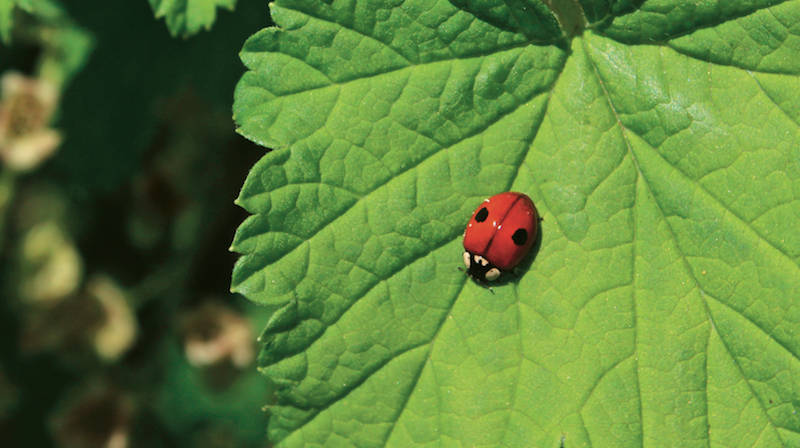
The Impact of Beneficial Fungi on Natural Enemies
Entomopathogenic or beneficial fungi are relatively ubiquitous worldwide and are commonly used in greenhouse production systems to suppress populations of different insect pests, such as aphids, thrips and whiteflies.
Entomopathogenic fungi, in general, infect the insect cuticle by means of enzymatic degradation and/or mechanical pressure. Once inside the host, the entomopathogenic fungus distributes throughout the haemocoel, which is the primary body cavity that contains circulatory fluids. Death normally occurs in three to 14 days after the conidia (spores) of the entomopathogenic fungus contact the host.
Death may be caused by mechanical damage via spore penetration, resulting in water loss, and/or poisonous toxins produced by the entomopathogenic fungus. Mortality is generally dose-dependent, with higher conidia concentrations leading to faster kill and enhanced mortality rates of insect pests.
Factors That Impact Entomopathogenic Fungi
There are a number of pesticides containing entomopathogenic fungi as the active ingredient that are commercially available for use in greenhouse production systems, including: Beauveria bassiana Strain GHA (BotaniGard: BioWorks Inc.), Metarhizum anisopliae Strain F52 (Met52: Monsanto BioAg Inc.), and Isaria fumosorosea Apopka Strain 97 (Ancora: OHP Inc.). Direct effects associated with entomopathogenic fungi involve acute mortality or survival (longevity), over a specified time period, of the life stages of natural enemies such as the egg, larva, nymph, pupa or adult. Indirect effects may inhibit feeding behavior (for predators); impact parasitism (for parasitoids); decrease female reproduction; reduce prey availability; and diminish foraging behavior or mobility.
The direct and indirect effects of entomopathogenic fungi on natural enemies is contingent on these factors: 1) product formulation, 2) spore concentration, 3) natural enemy type (parasitoid or predator) and species, 4) life stage exposed (egg, larva, nymph, pupa or adult), 5) timing of application [in space (spatial) and time (temporal)], and 6) environmental conditions (temperature, relative humidity and light intensity). Furthermore, biological parameters that may be indirectly affected by exposure to entomopathogenic fungi include: host acceptance, reproduction, foraging behavior, sex ratio, and host emergence (for parasitoids).
The integration of natural enemies and entomopathogenic fungi may be influenced by food availability and avoidance factors. For instance, any changes in host population numbers due to applications of an entomopathogenic fungus may reduce availability of food sources, thus indirectly affecting subsequent natural enemy populations. In addition, predators may avoid consuming hosts that are infected by entomopathogenic fungi.
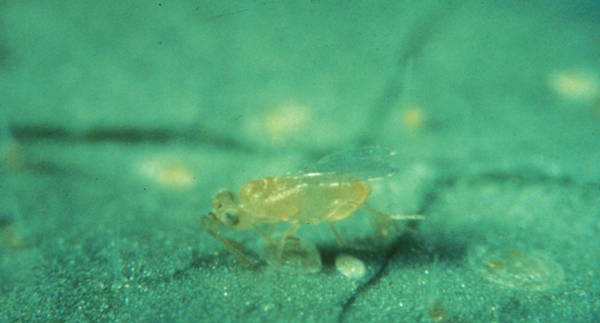
Entomopathogenic fungi produce volatiles or odors after infecting hosts, which may mask the volatiles emitted by hosts that are used by predators to determine their location. In all three instances prey search time increases, predation rates decrease, and efficacy associated with regulating pest populations is reduced.
Subsequent factors that also need to be considered in regards to the direct and indirect effects of entomopathogenic fungi on natural enemies are: 1) host treated with an entomopathogenic fungus may not be acceptable as a food source for parasitoids or predators; 2) parasitoids may avoid laying eggs into hosts already infected by an entomopathogenic fungus (Figure 1); 3) entomopathogenic fungi may be able to outcompete immature parasitoids developing inside hosts; 4) parasitoids may become infected by an entomopathogenic fungus while developing inside an infected host; 5) during searching, parasitoids and predators may encounter free conidia of entomopathogenic fungi on plants and consequently become infected; 6) predators may ingest spores of an entomopathogenic fungus when consuming an infected host (Figure 2), thus compromising efficacy of both the predator and entomopathogenic fungus; 7) a parasitoid larva developing inside a host may inadvertently ingest fungal spores; and 8) multiple-pest complexes may influence the interactions between natural enemies and entomopathogenic fungi.

entomopathogenic fungi.
Natural enemies may ingest fungal spores when grooming or cleaning themselves (Figure 3), or when feeding on contaminated hosts, although any indirect effects will depend on the concentration of viable spores present. Moreover, predators may not accept a host infected with an entomopathogenic fungus or the predator may ingest spores of an entomopathogenic fungus while consuming a host.
Direct or indirect effects of entomopathogenic fungi on parasitoids may also be contingent on interference competition where an entomopathogenic fungus infects a host before a parasitoid. The exclusion of the parasitoid, based on the entomopathogenic fungus having a time (temporal) advantage, may compromise host acceptability. In addition, an entomopathogenic fungus may out-compete a parasitoid for host resources resulting in host death before the parasitoid can complete development. However, if a parasitoid has a time (temporal) advantage, then the parasitoid can develop successfully. Therefore, separation by time of natural enemies and entomopathogenic fungi may lead to successful suppression of insect pest populations.
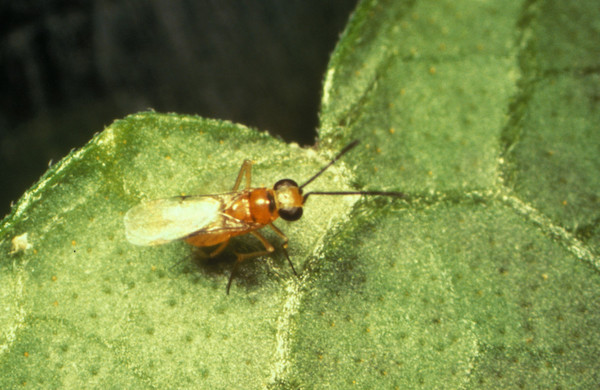
The Effects of Entomopathogenic Fungi
The effects of entomopathogenic fungi can vary depending on the application rate (concentration), natural enemy type, life stage exposed and length of exposure. For instance, there was a delayed effect associated with adult survival of the ladybird beetle, Cryptolaemus montrouzieri or “Mealybug Destroyer” (Figure 4), when exposed to B. bassiana with 100 percent survival after eight hours of exposure but 10 percent survival after 72 hours of exposure. In addition, 50 percent of C. montrouzieri larvae (Figure 5) died after consuming mealybugs contaminated with B. bassiana. However, B. bassiana was not directly harmful (based on percent infection) to adults of the predatory mites, Neoseiulus (formally=Amblyseius) cucumeris and Phytoseiulus persimilis, and larvae of the parasitoids, Eretmocerus eremicus and Aphidius colemani.
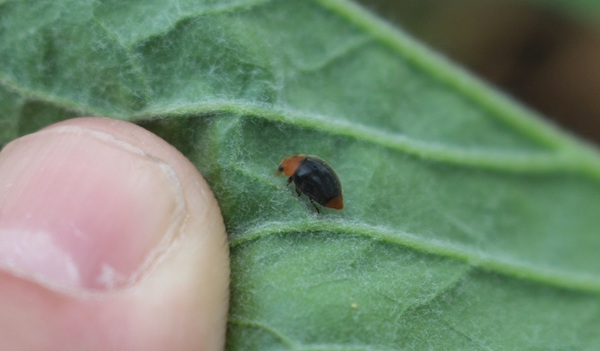
In addition, there were no direct effects to adults of the parasitoids, Encarsia formosa, and E. eremicus, and the predatory midge, Aphidoletes aphidimyza, after exposure to B. bassiana; whereas, A. colemani adults were directly affected by B. bassiana. A seven-day exposure period did not directly harm nymphs or adults of N. cucumeris and exposure to B. bassiana did not indirectly affect the parasitism rate of E. formosa, on the greenhouse whitefly, Trialeurodes vaporariorum. However, a 72-hour exposure period to B. bassiana reduced adult survival and reproduction of the predatory mite, Neoseiulus californicus with 71 percent mortality of adult females. Beauveria bassiana and M. anisopliae are directly harmful to adult O. insidiosus. Any direct effects of entomopathogenic fungi on natural enemies may be due to differences in application rate (concentration) or exposure period.
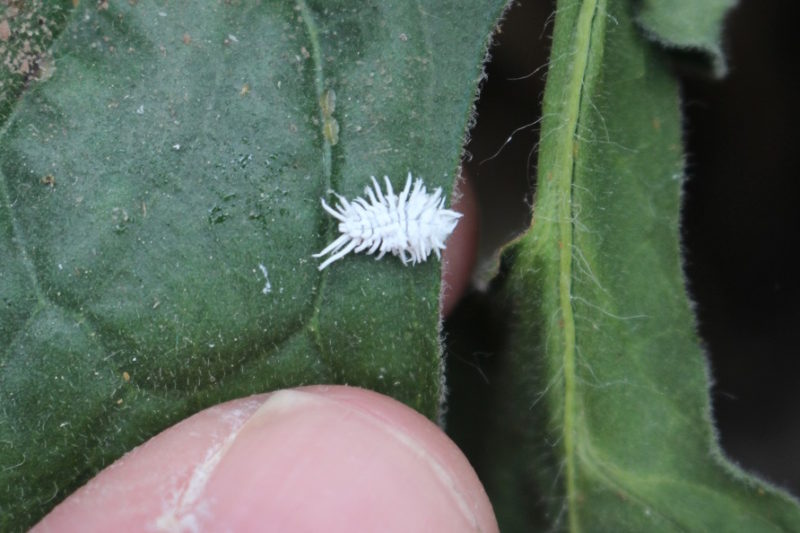
In conclusion, there is a general misperception that entomopathogenic fungi are not harmful to natural enemies. However, based on the information presented in this article, greenhouse producers need to exercise caution in applying entomopathogenic fungi when simultaneously using natural enemies against insect and/or mite pests.
Raymond A. Cloyd is professor and extension specialist in horticultural entomology/plant protection at Kansas State University. He can be reached at rcloyd@ksu.edu.


 Video Library
Video Library 




















